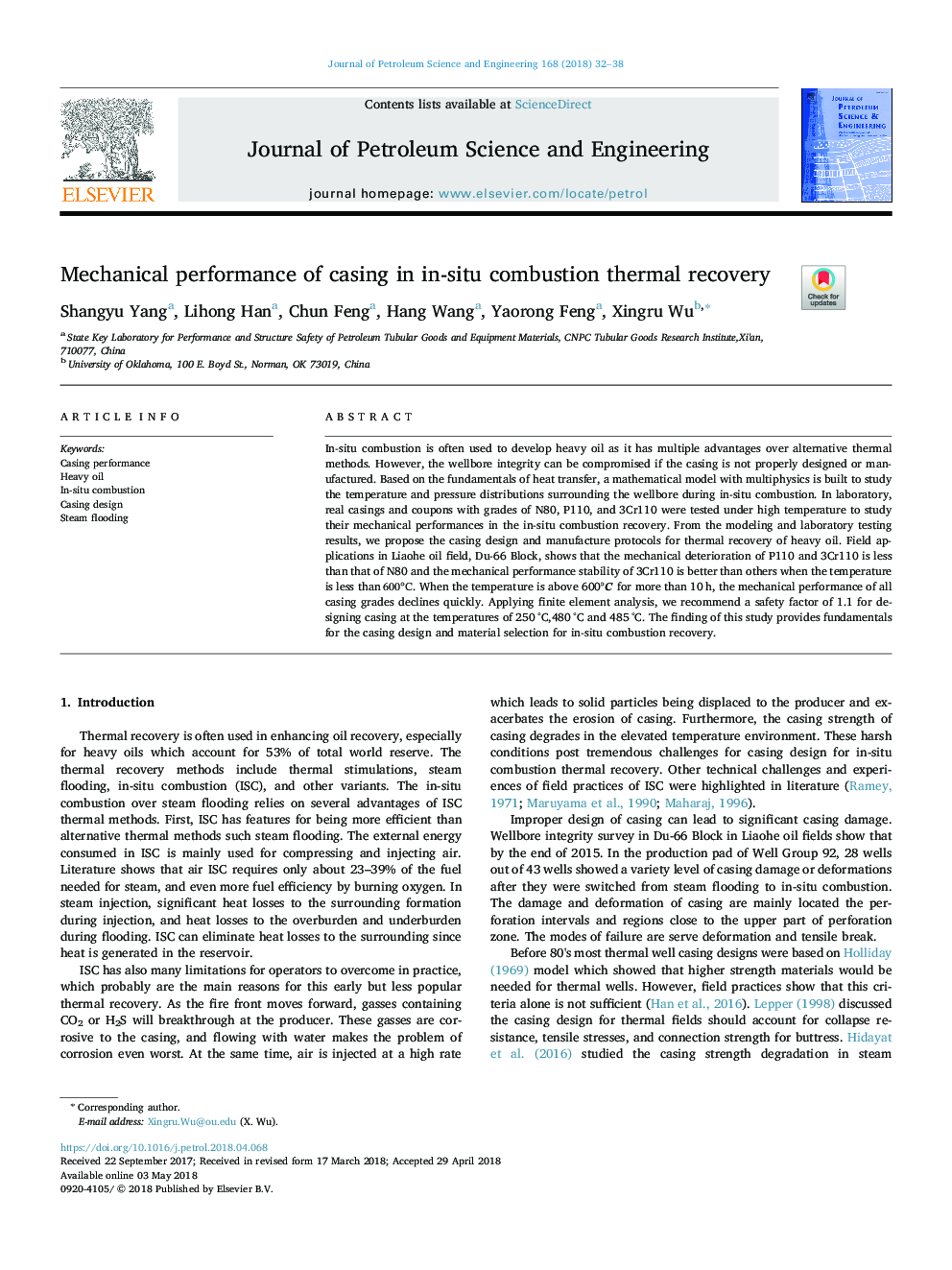| Article ID | Journal | Published Year | Pages | File Type |
|---|---|---|---|---|
| 8124734 | Journal of Petroleum Science and Engineering | 2018 | 7 Pages |
Abstract
In-situ combustion is often used to develop heavy oil as it has multiple advantages over alternative thermal methods. However, the wellbore integrity can be compromised if the casing is not properly designed or manufactured. Based on the fundamentals of heat transfer, a mathematical model with multiphysics is built to study the temperature and pressure distributions surrounding the wellbore during in-situ combustion. In laboratory, real casings and coupons with grades of N80, P110, and 3Cr110 were tested under high temperature to study their mechanical performances in the in-situ combustion recovery. From the modeling and laboratory testing results, we propose the casing design and manufacture protocols for thermal recovery of heavy oil. Field applications in Liaohe oil field, Du-66 Block, shows that the mechanical deterioration of P110 and 3Cr110 is less than that of N80 and the mechanical performance stability of 3Cr110 is better than others when the temperature is less than 600°C. When the temperature is above 600°C for more than 10â¯h, the mechanical performance of all casing grades declines quickly. Applying finite element analysis, we recommend a safety factor of 1.1 for designing casing at the temperatures of 250â¯Â°C,480â¯Â°C and 485â¯Â°C. The finding of this study provides fundamentals for the casing design and material selection for in-situ combustion recovery.
Related Topics
Physical Sciences and Engineering
Earth and Planetary Sciences
Economic Geology
Authors
Shangyu Yang, Lihong Han, Chun Feng, Hang Wang, Yaorong Feng, Xingru Wu,
